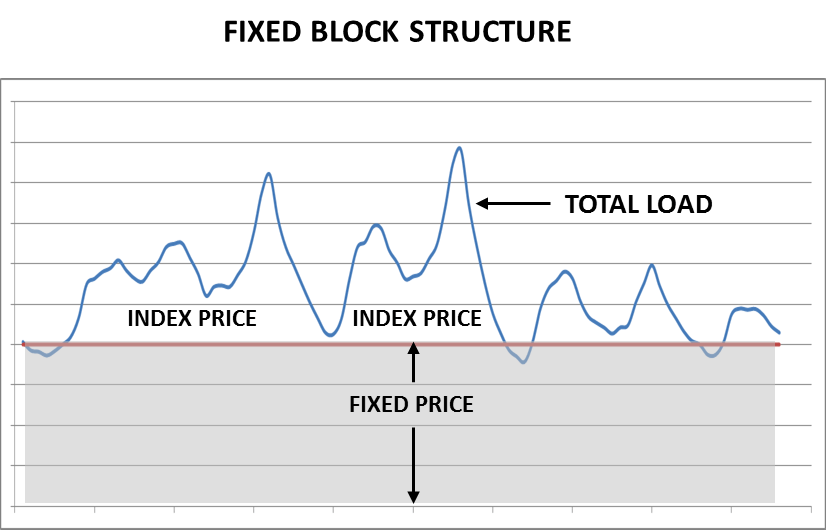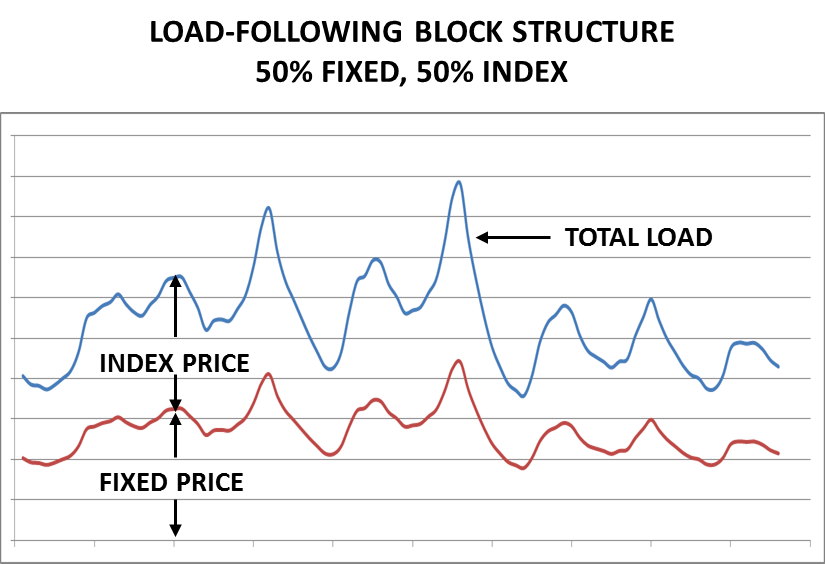Have questions or need help? Give us a call: 1-(888)-364-9259
Hybrid Commercial electricity rate plans and typical rate plans.
Retail electric providers typically offer fixed price plans to commercial customers. These plans are great for businesses that are risk averse and prefer locking in their electric rate for the term of the contract. The retail electricity supplier assumes market price risk and includes a premium in the fixed price for managing that risk.
Some energy suppliers also offer commercial electricity customers the option of choosing an index rate plan. An index rate plan is typically tied to electricity pricing data such as locational marginal prices established by the power grid operator. Because the customer assumes the market price risk, index price electricity plans do not include a risk management premium. However, index prices are subject to significant price fluctuations and are not suitable for all commercial electricity customers.
The choice business customers face is either accepting the market risk themselves or locking in a fixed rate. With fixed rates, the energy provider manages the risk for them. These mutually exclusive choices resulted in the development of hybrid rate structures. These structures combined elements of both fixed price and index plans. These hybrid plans allow for a balancing of market price between the energy provider and the electricity customer.
The first example of a hybrid electricity plan is a fixed block. In this scenario, the customer agrees to purchase a fixed quantity of electricity at a fixed price for every metering interval. The most common variation of this rate plan is a “take or play” block. The commercial electricity customer pays for the block of energy regardless of their actual usage. Any electricity usage in excess of the block is charged based on an index price and a fixed adder. The customer receives no credit for any usage below their block quantity. The block quantity, therefore, should be set at a level to minimize paying for unused electricity. Large commercial and industrial customers with high load factors may choose this plan. Use this as a means of locking in the electricity rate for their base usage. This is typically not a good rate structure for customers with lower load factors where setting a block usage quantity is problematic.

A variation of the fixed block electricity rate provides some credit for usage below the block quantity. This “block with bilateral settlement” approach reduces the financial impact of deficient usage. This expands the market of potential customers by making it a better fit for medium load factor customers. However, customers should be aware that the credit for deficient usage is not the same as the charge for usage in excess of the block quantities. The energy supplier has hedged the block electricity quantities and selling them back into the real time electricity market incurs additional costs.
Another example of a hybrid electricity plan is a load-following block. The customer agrees to a fixed price for a certain percentage of their electricity usage. The remaining electricity usage bills at an index rate. The advantage of this type of hybrid electricity plan is that it works for commercial customers of practically all sizes and load factors. The fixed block plan is usually restricted to larger customers with easily identifiable base usage quantities. The load-following or shaped block approach eliminates the problem of setting an appropriate block usage quantity or having to deal with deficient usage. The commercial electricity customer can select the percentage of usage to lock in at a fixed price and then have that percentage applied to every metering interval. This allows a greater number of businesses to customize their electricity plan to their individual risk tolerance.

As with any indexed electricity plan, customers should understand the volatility of the index used in the billing process. Customers should also pay close attention in the electric service agreement as to what provisions, if any, they have to convert to a traditional fixed rate plan during the term of their agreement.